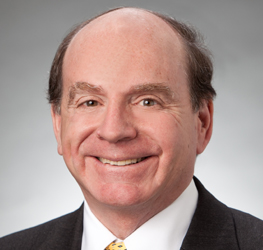Accountable Care Organizations (ACOs) can share costs of telehealth and remote patient monitoring services among their hospitals, providers/suppliers, and other ACO participants, according to federal regulations under the Medicare Shared Savings Program (MSSP) fraud and abuse waivers. In protecting these arrangements, CMS and OIG recognize how telehealth technologies and innovative care processes can help reduce costs for the Medicare program. If 2015 was the year that brought telehealth to the consumer (and stock) market, 2016 may be the year of telehealth and ACOs.
Telehealth Enjoys MSSP ACO Fraud and Abuse Waivers
The MSSP ACOs are a key component of the Medicare delivery system reform initiative designed to reduce fragmented or unnecessary care and excessive costs for health care services furnished to Medicare fee-for-service beneficiaries. The mention of telehealth services among the waivers in the regulations confirms CMS’ and OIG’s belief that “coordinating care, such as through the use of telehealth, remote patient monitoring, and other enabling technologies” is an activity reasonably related to the purposes of the Medicare Shared Savings Program and therefore is eligible for protection under one or more of the fraud and abuse waivers. One example CMS and OIG gave was a hypertensive patient using home telehealth monitoring of blood pressure.
Only 27% of ACOs Received Incentive Payments Last Year
The fraud waivers and their reference to telehealth come at a perfect time for ACOs. CMS’ report on ACO quality and financial performance results in 2014 revealed that, while ACOs saved the Medicare program nearly $600 million and notably improved quality, only 27% of the 353 ACOs participating in the MSSP received any shared savings incentive payments from the government. That means, while CMS concluded ACOs did a good job in 2014, most ACOs did not perform well enough to reach their quality and cost savings benchmarks. Despite making significant investments in infrastructure and operations to create an ACO (whether Pioneer or MSSP), the majority of ACOs still need to move the needle further in order to enjoy the financial incentives of these programs.
Increasing the quality of ACO performance by increasing quality will only become more important as CMS expands its Medicare alternative payment models. CMS intends for 30 percent of Medicare payments to be made in alternative payment models by the end of 2016. That number increases to 50 percent by the end of 2018. Additionally, CMS seeks to have 85 percent of Medicare fee-for-service payments in certain value-based purchasing categories by 2016 and up to 90 percent by 2018.
Only 20% of ACOs Use Telehealth
The low rate of incentive payments may come as no surprise to some, as a recent study revealed only 20% of ACOs currently use telehealth or telemedicine technologies in their operations. Are the 20% of telemedicine-using ACOs among the 27% who received incentive monies? That question has not been studied, but our team is aware of ACOs that use telemedicine and that received incentive monies in 2014.
Since ACOs have already made substantial commitments to improving quality and reducing costs in a comprehensive, integrated way, they are among the most obvious beneficiaries to harness the power of telemedicine. With these new waiver provisions, CMS and OIG appear to be encouraging that ACOs strongly consider and incorporate telemedicine into their overall operations and services.
The MSSP waiver regulations show that barriers to growth and innovation for telemedicine providers continue to lower. ACOs that capitalize on these waivers, and use telemedicine and remote monitoring technology, may see an improvement in their financial incentive payments at the end of the year.
For more information on telemedicine, telehealth, virtual care and other health innovations, including the team, publications, and other materials, visit Foley’s Telemedicine Practice.

